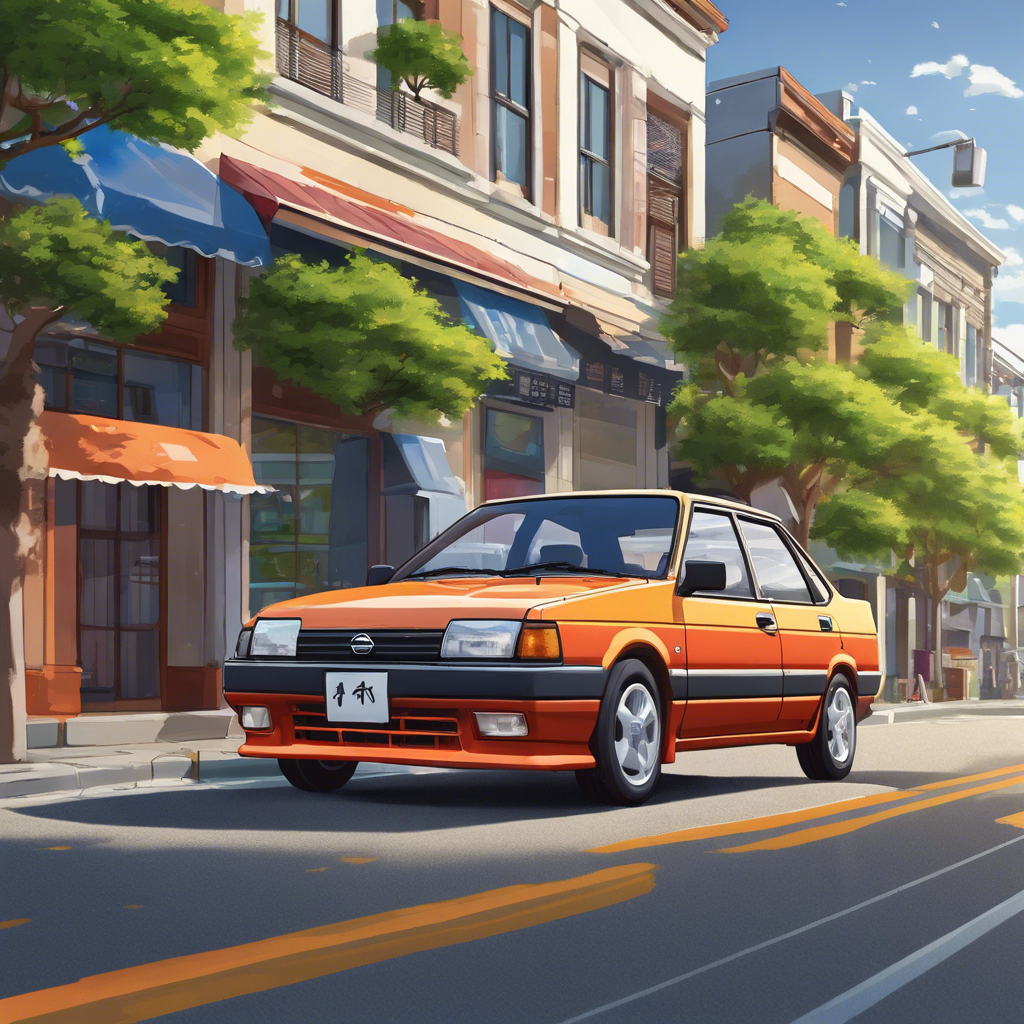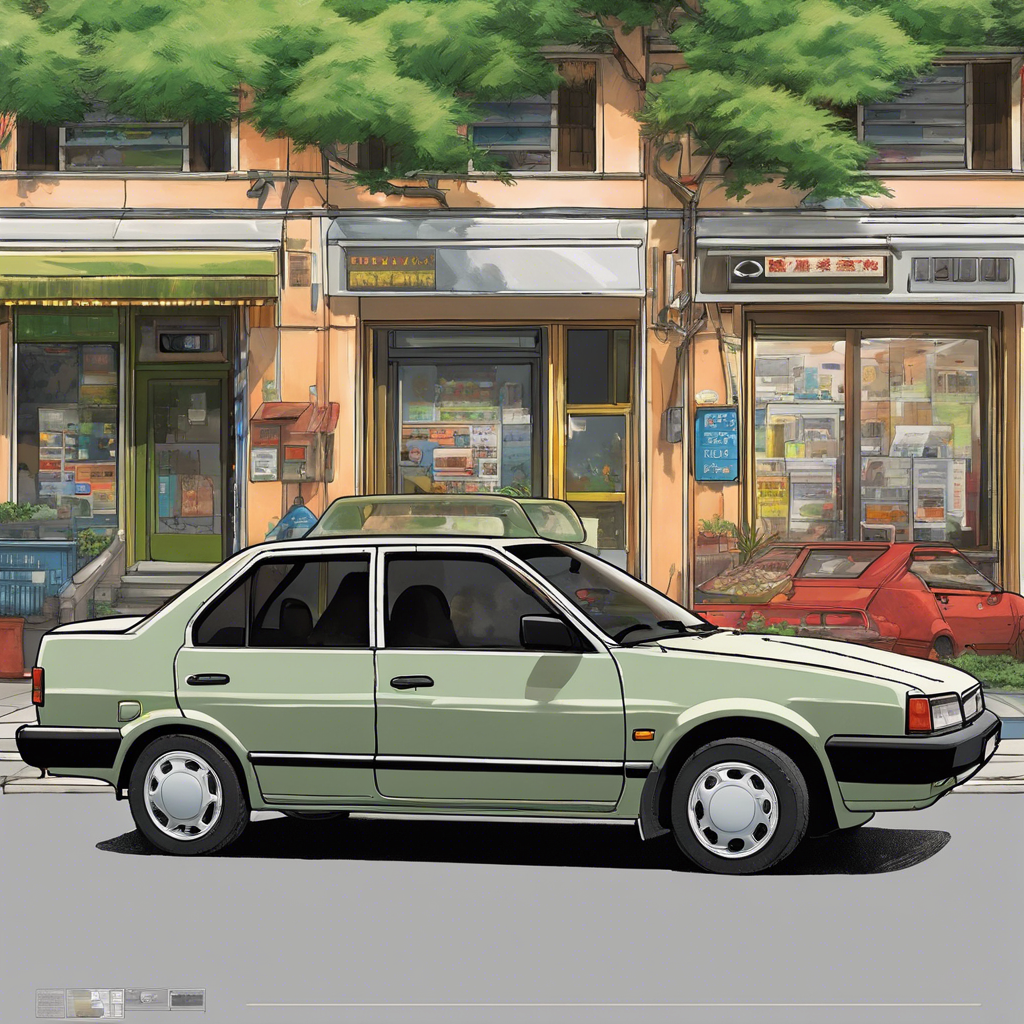Nissan Tsuru: A Cultural Icon in the Automotive Landscape
September 29, 2024

The automotive industry is replete with vehicles that have not only transformed the way we commute but have also left an indelible mark on culture and society. Among these vehicles is the Nissan Tsuru, a compact car that has grown beyond being merely a mode of transportation to become a symbol of reliability, simplicity, and, surprisingly, affection in various markets. Although officially discontinued in 2017, the legacy of the Nissan Tsuru continues to resonate, particularly in markets like Mexico, where it enjoyed immense popularity. This blog post will explore the rich history, technical specifications, cultural significance, and the future outlook for the Nissan Tsuru.

A Brief History
The Nissan Tsuru is essentially a rebadged version of the Nissan Sentra, introduced in 1982. Over the years, the Tsuru underwent several design changes and upgrades but maintained its core identity as a reliable, affordable compact car. The first generation of the Tsuru caught the attention of consumers with its straightforward design and practicality, traits that would define the model for years to come.
By 1992, the second generation was rolled out, characterized by improvements in comfort and a modest redesign. Nissan’s decision to continue the Tsuru’s production in various markets, particularly in Mexico, led to the model being introduced in its third-generation form during the early 2000s. Despite the international automotive market evolving rapidly, the Tsuru continued to attract customers due to its cost-effectiveness, ease of maintenance, and commendable fuel efficiency.
Nissan’s strategy to keep the Tsuru in production long after other markets had transitioned to more sophisticated models speaks to the vehicle’s significance in specific regions. The Tsuru became synonymous with value and durability, earning a dedicated fan base.
Technical Specifications
The Nissan Tsuru was designed with simplicity and functionality in mind. While it might lack the luxurious features offered by its contemporary rivals, it compensated through practical engineering and straightforward design.
Engine and Performance
Over the years, the Tsuru was equipped with various inline-four engines ranging from 1.6 to 2.0 liters. The 1.6-liter engine, in particular, offered a balance of adequate power and impressive fuel efficiency, making it a favorite among daily commuters. The vehicle’s lightweight body and compact dimensions further enhanced its agility on urban roads.
Design and Features
The Tsuru’s design has been both its strength and limitation. Its exterior is characterized by clean lines and unpretentious aesthetics that resonate with practicality. Inside, the Tsuru prioritized functionality over luxury, offering basic yet comfortable seating for five passengers. While it lacked high-end infotainment systems and advanced safety features, the simplicity attracted buyers who valued reliability over complexity.
Safety Ratings
In terms of safety, the Tsuru received mixed evaluations. Its basic chassis design incorporated some safety features typical of its time, such as seatbelts and airbags, but it generally did not meet the higher safety standards that modern consumers have come to expect. The absence of advanced safety technologies such as anti-lock braking systems or electronic stability control is one reason the Tsuru faced critiques, especially as other manufacturers progressed in developing safer vehicles.
Cultural Significance
The Nissan Tsuru transcended its status as a mere vehicle; it became a cultural phenomenon, particularly in Mexico. For many, it embodied the quintessential family car—the reliable companion for road trips, commutes, and daily errands.
Affordability and Accessibility
The Tsuru’s affordability made it a popular choice among lower and middle-class families. With a competitive price point compared to other compact cars on the market, many families took pride in ownership of a Tsuru, making it accessible to a broad audience.
Symbol of Persistence
In a country where economic fluctuations have shaped the automotive market, the Tsuru has come to symbolize resilience. Families that relied on the Tsuru for daily transport often viewed it as an extension of their household. In this context, the car became a steadfast witness to life’s milestones—school drop-offs, long drives to the beach, and family vacations.
A Fixture in the Taxi Industry
The Nissan Tsuru’s reputation for reliability also made it a top choice for taxi operators. In Mexico City, for example, the Tsuru became a staple of the taxi fleet, further embedding itself in the urban landscape. As a result, it has become part of the collective memory of millions who have traveled in one, whether as a passenger or a driver.
The Discontinuation
Despite its popularity, Nissan announced in 2017 that it would discontinue the Tsuru due to changing market dynamics and safety regulations. The decision was met with both nostalgia and sadness from enthusiasts and owners. As regulations became more stringent globally, the aging platform of the Tsuru struggled to keep pace with innovations in safety features and environmental standards.
The Aftermath
Post-discontinuation, the Tsuru continues to linger in the hearts of many. The car remains a common sight on roads in Mexico and other countries, where used Tsurus are still actively driven. The model also holds a notable place in online automotive forums and social media communities, where fans share stories, maintenance tips, and personal experiences.
The Future of the Nissan Tsuru
While the Nissan Tsuru has officially exited the production stage, its legacy is far from over. The story of the Tsuru encapsulates the essence of what many seek in a vehicle: reliability, affordability, and practicality.
Collectible Status
As time progresses, the Tsuru may very well transition into a classic car, appealing to collectors and automotive enthusiasts who appreciate its simplistic design and cultural significance. Vintage car shows may spotlight the Tsuru, celebrating its unique place in automotive history while recognizing its role in shaping the landscape of transportation in Mexico.
Legacy Through Evolution
In an era focused on electric and hybrid vehicles, companies like Nissan might revisit the elements that made the Tsuru successful as they develop future compact models. With the push toward sustainability, there is potential for an electrified version that upholds the original’s values while embracing modern technologies.
Conclusion
The Nissan Tsuru serves as a poignant reminder of the automotive industry’s diverse history and its interconnectedness with culture and society. While it may have ceased production, its legacy as a dependable and practical vehicle endures, reflecting the importance of affordability and reliability in the tumultuous automotive landscape. As we look forward, the lessons learned from the Tsuru can guide manufacturers seeking to create the next generation of vehicles that resonate with consumers on a personal level. The Nissan Tsuru is indeed more than just a car; it is a testament to how transportation shapes lives and communities, one journey at a time.